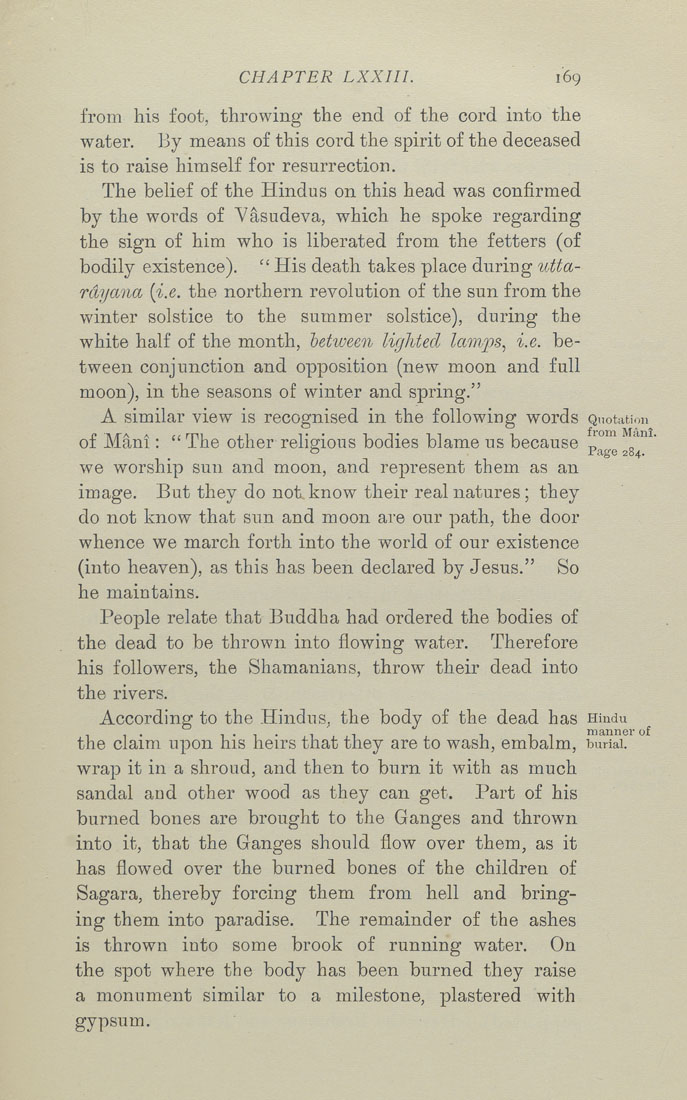CHAPTER LXXIIL 169
from his foot, throwing the end of the cord into the
water. By means of this cord the spirit of the deceased
is to raise himself for resurrection.
The belief of the Hindus on this head was confirmed
by the words of Vasudeva, which he spoke regarding
the sign of him who is liberated from the fetters (of
bodily existence). " His death takes place during utta-
rdyana (i.e. the northern revolution of the sun from the
winter solstice to the summer solstice), during the
white half of the month, between lighted Ictmps, i.e. be¬
tween conjunction and opposition (new moon and full
moon), in the seasons of winter and spring."
A similar view is recognised in the following words Quotation
of Mant: " The other religious bodies blame us because J°™ '"^'
o Page 284.
we worship sun and moon, and represent them as an
image. But they do not know their real natures; they
do not know that sun and moon are our path, the door
whence we march forth into the world of our existence
(into heaven), as this has been declared by Jesus." So
he maintains.
People relate that Buddha had ordered the bodies of
the dead to be thrown into flowing water. Therefore
his followers, the Shamanians, throw their dead into
the rivers.
According to the Hindus, the body of the dead has Hindu
. ^ . . , . . . manner of
the claim upon his heirs that they are to wash, embalm, buriah
wrap it in a shroud, and then to burn it with as much
sandal and other wood as they can get. Part of his
burned bones are brought to the Ganges and thrown
into it, that the Ganges should flow over them, as it
has flowed over the burned bones of the children of
Sagara, thereby forcing them from hell and bring¬
ing them into paradise. The remainder of the ashes
is thrown into some brook of running water. On
the spot where the body has been burned they raise
a monument similar to a milestone, plastered with
gypsum.
|








